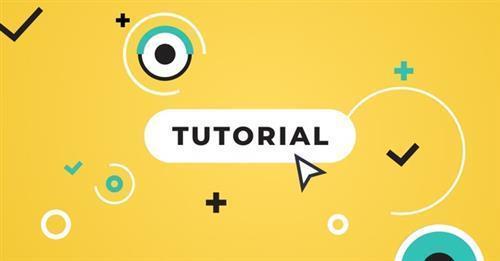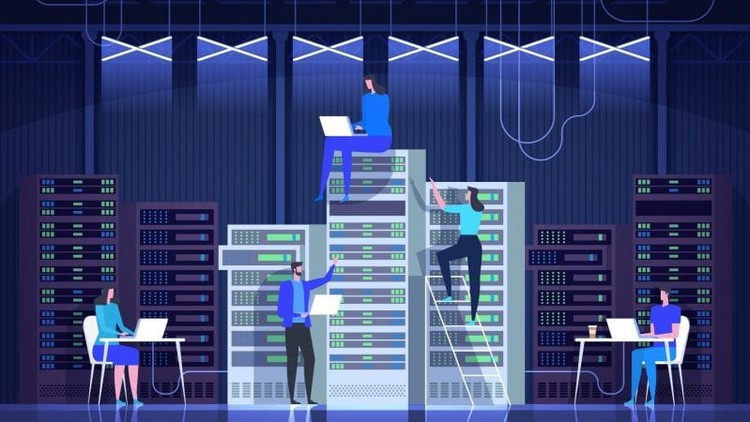
Free Download Cisco Routing & Switching (CCNA & CCNP Equivalent)
Last updated 2/2024
Duration: 29h 52m | Video: .MP4, 1920x1080 30 fps | Audio: AAC, 44.1kHz, 2ch | Size: 21 GB
Genre: eLearning | Language: English
Master the Routing, Switching and IP Services Skills to be the best of the Network Engineers.
What you'll learn
Routing Concepts
Default, Static and Dynamic routing
OSPF (Open Shortest Path First)
BGP (Border Gateway Protocol)
Switching Concepts
STP, VTP, Routing Ports, SVI, L2 & L3
Access Control Lists Concepts
Network Address Translation Concpets
IP services VRRP, NHRP, GLBP etc.
If you want to understand Switching than this is the course for you since we will be covering Layer2 & Layer3 switching, which is extremely important!
Student will also learn: Etherchannel, Switchport security, among other concepts in a switching environment
Wireless
MPLS
VXLAN
Requirements
IT networking Fundamentals
TCP/IP
Description
Advanced Routing, Switching and Services networking course provides you with the skills and knowledge to implement and troubleshooting for advanced routing technologies and services, including - Layer 3 services, Infrastructure security, Infrastructure services, L2 services etc. This course will provide you the knowledge and skills you need to install, configure, operate, and troubleshoot an enterprise network. This networking course helps prepare you to upskill yourself for day to day networking tasks as a Network Engineer.
If you want to start earning more while doing what you love, well then this course is perfect for you. Even if you have knowledge of creating networks or knowing different communication tools, still this course will teach you everything in depth you need to know about hubs, switches, networking, routers, etc.
The course has multiple modules which will enhance your knowledge in the particular technologies and features
Switching : The switching course has everything you need to know about switches. How switches learn MAC addresses, what VLANs and trunks are and how spanning-tree is used to create loop-free topologies. You will also learn more complex topologies like SDM, CEF etc.
Spanning Tree : When you add redundancy in your switched network, you add potential loops. Spanning-tree is used on switches to create a loop-free L2 topology. In these lessons you will learn the basics of spanning-tree and the different versions: PVST, RPVST, and MST.
EIGRP : EIGRP (Enhanced Interior Gateway Routing Protocol) is Cisco's IGP (Interior Gateway Protocol) that was made an "open standard" in 2013. It is a distance vector routing protocol similar to RIP but has many advanced features. In these lessons, we start with the basics of EIGRP and end with the most advanced topics.
OSPF : OSPF (Open Shortest Path First) is a popular link-state routing protocol. Routers exchange pieces of information called LSAs (link state advertisement) and build a topology database which we call the LSDB (link state database). In these lessons, we start with the basics and work our way through the most advanced OSPF topics.
BGP : BGP (Border Gateway Protocol) is the routing protocol of the Internet, used to route traffic from one autonomous system (AS) to another. It's an important topic to understand if you work at an ISP or at a large company that is connected to two or more ISPs. Unlike IGPs like OSPF or EIGRP, BGP uses a set of attributes to determine the best path for each destination.
IPv6 : IPv6 is the successor of IPv4 and the main reason we need it is because we are running out of IPv4 address space. IPv4 uses 32-bit addresses and offered us about 4.3 billion addresses, IPv6 offers 128-bit addresses so we have a huge amount of available addresses. These lessons will explain the basics of IPv6 and how to configure it on Cisco IOS routers.
IP Services: All about the different Load Balancing protocols to achieve high availability e.g NHRP, VRRP and GLBP etc.
Static Routing Concepts : Deep dive in the logic of Static Routing so that you understand the basic building blocks of networking.
Default Routing : This course will make you understand the topics from a packet level, so that trouble shooting becomes a fun part for you.
We will be continuously uploading more and more sections and lectures to this course.
Targeted course duration is 50 hours plus content.
pdated on 17-08-2022
Uploaded Access Control Lists ACL section
pdated on 18-08-2022
Uploaded Network Address Translation section
pdated on 17-09-2022
Uploaded L2 Switching Concepts section
pdated on 17-09-2022
Uploaded Inter-Vlan Routing section
pdated on 18-09-2022
Uploaded Spanning Tree Protocol Basics section
pdated on 18-09-2022
Uploaded Etherchannel / Port-Channel / Link Aggregation section
pdated on 28-10-2022
Uploaded DHCP-Server / DHCP-Relay Agent Section
pdated on 28-10-2022
Uploaded Securing your Switch in the Network
pdated on 03-02-2023
Uploaded Section "IP Services - HSRP, VRRP & GLBP"
pdated on 12-08-2023
New Section Added: "IPSec VPN on Cisco IOS"
Who this course is for
Network Engineers
Anyone that wants to learn the in's and out's of Routing and Switching
Cisco Administrators CCNA
CCNP and CCIE Students
CCNP and CCIE Administrators
Network and Security Engineer
Homepage
Recommend Download Link Hight Speed | Please Say Thanks Keep Topic Live
No Password - Links are Interchangeable







